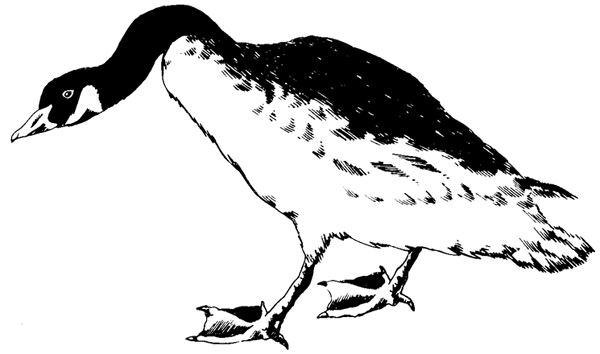
TOTEMS IN A CIVILIZED WORLD
Everything in nature has a purpose. No matter how odd it appears or how strange it behaves, there is some purpose. We may not understand it all, but how often do we understand the behaviors of those around us? People have a tendency to dislike that which they don’t understand. Knowledge eliminates prejudices and misconceptions.
No plant or animal is intrinsically bad or negative. Such statements are human value judgments, and usually based upon little contact with or knowledge of a very complex system in which all parts are functional. Humans often know little about an organism’s complete role within the ecosystem.
Some believe that there is a danger in exploring the animal world from a mystical perspective. There is often a fear that it will lead to anthropomorphismendowing the animals with human qualities, or even deifying them in some cases. I believe humans have come too far for us to completely retreat along those lines again.
Yes, there may be a possibility of becoming superstitious, but as I mentioned in part one of this book, superstition usually has no knowledge base. The more we study animals and all of nature, the more our own lives are filled with wonder. Sometimes we endow animals with human, mystical, and even divine characteristics, but this is often due to the fact that our language often becomes quite inappropriate for expressing the awe and wonder of the natural experience.
In our rationalistic society, it becomes difficult not to question the value of some plants, animals, and their interrelationships. We need to ask ourselves whether we need to justify the existence of a plant or animal anymore than the existence of people. Our ability to respect and feel for all of nature should not be based upon its level of “productivity” or intelligence. Who is qualified to determine such?
The natural world is a community of plants, animals, and humans. All are part of an ecosystem. All are necessary for every other aspect. Everything that occurs in nature repercusses upon us. Everything that happens to us, repercusses upon nature. Though we like to remain separate, we are not. We may not recognize the repercussions, but they are real, nonetheless, and she would honor that.
Before we can honor anything, we have to know something about it. We have to see evidence that it is worth honoring. In this book you will have seen that every animal has something about it which can be honored. The following are ways that you can honor all of Nature and help keep all of Nature as your totem:
• Plant trees. (Trees provide shelter and food for animal life, and help filter out pollution.)
• Observe animals and their activities.
• Learn as much about Nature as you can.
• Make bird homes.
• Plant flowers to draw bees and butterflies.
• Pick up litter wherever you go.
• Write letters to public officials to support conservation and environmental protection.
• Help others learn about endangered species.
• Don’t buy animals taken from the wild.
• Don’t buy products made from wild animals.
• Don’t buy products that use animals in testing and research.
• Support organizations that support the environment (zoos, nature centers, non-profit organizations, etc.).
Animal wonders are everywhere. Every animal is a wonder that helps remind us of our own wonderfulness. When we see one aspect of the world with new eyes, we begin to see ourselves with new eyes as well. All of Nature is our totem. Every animal. Every plant. Every time an animal or plant becomes extinct or threatened, the world loses some of its beauty, and we, some of ours. Every time we see the uniqueness of one animal or plant, we also discover something new and unique about ourselves.
Often people question my approach to Nature. Should we approach the animal world or any aspect of Nature from a mystical perspective? I think so. You don’t have to believe all of the symbology and mythology of Nature, but by examining it, you touch an ancient primal part of our soul, a part of you that is still capable of responding to Nature with wonder. It can stir a part of the soul that may not have been touched otherwise. This is the power of myth and symbol in Nature.
Sometimes it is more important to feel than to know. By arousing and stirring an ancient ember, the desire for more knowledge will grow; and from that desire will come opportunity to rediscover the joy and the mystery of the natural world.
To speak with the animals and learn from them, we first must be able to see them anew. It is my hope that this book will stir some embers that will build to a fire, for where there is fire there is light; and where there is light, there is joy and wonder!
